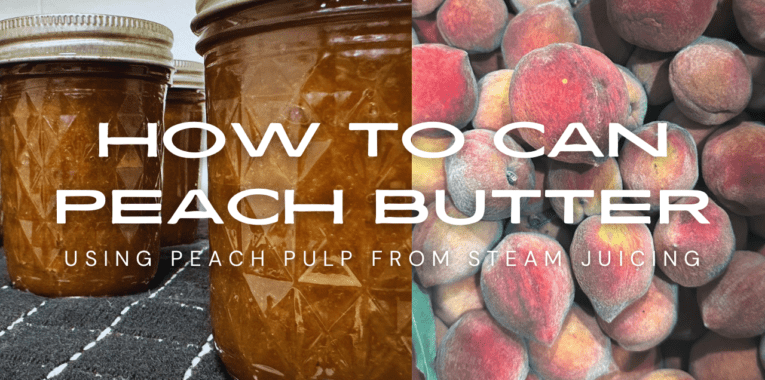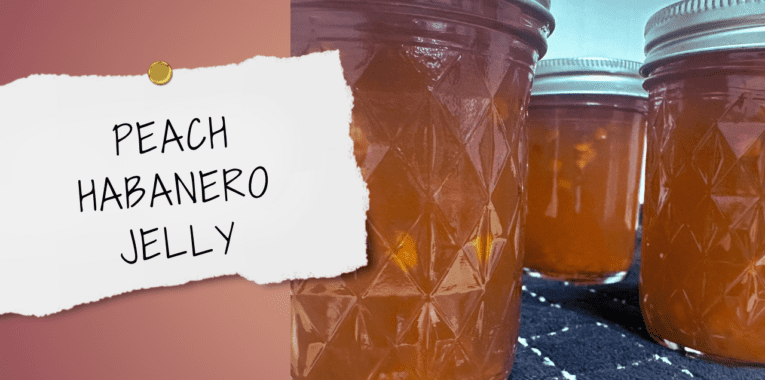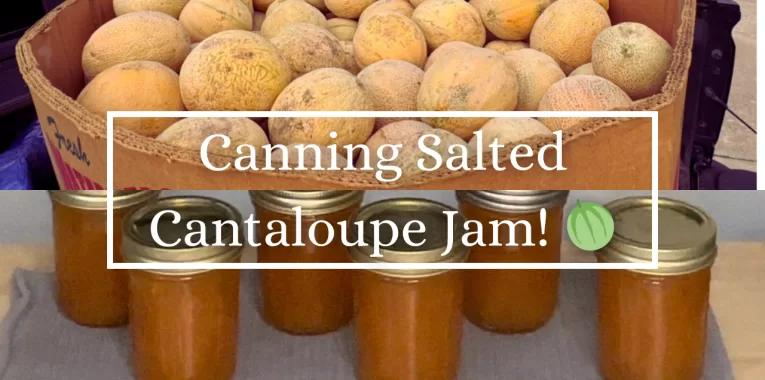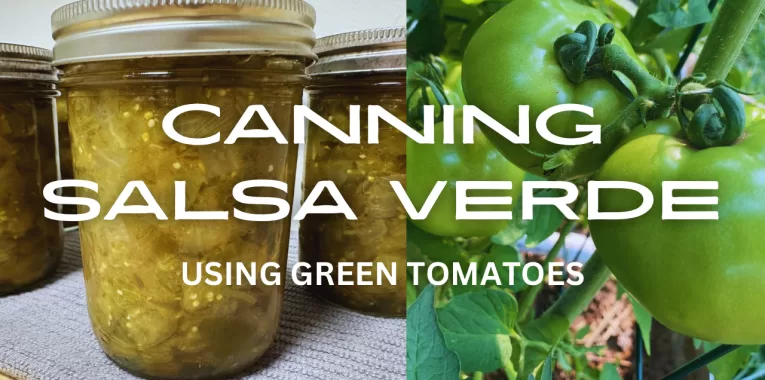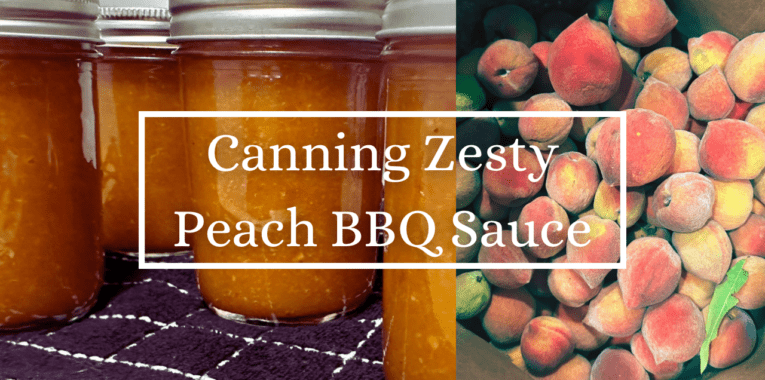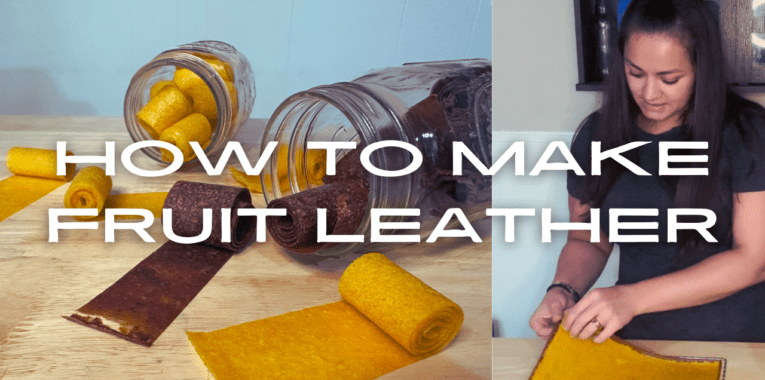Peach butter is my absolute favorite way to preserve peaches! It’s peach-y, cinnamon-y, and oh-so-delicious! If you have a steam juicer, this is a great way to use up the leftover peach pulp.
Another reason I love using the leftover peach pulp from the steam juicer is because most of the juice has been extracted. That means you don’t have to wait for hours for the peach butter to reduce!
Using Pulp From the Steam Juicer
If you have ever used a steam juicer, then you know that, after the juice is extracted from the fruit, you’re left with a ton of pulp! Most people recommend throwing it out, but, if you’re like me, then throwing out that pulp isn’t an option. That’s why I decided to make peach butter with it!
The concern with using leftover pulp from steam juicing is that there won’t be much flavor left. So, instead of letting my steam juicer run until there was absolutely no juice left in my peaches, I took it off of the heat once the juice production started slowing down.
For another way to use leftover fruit pulp, check out my fruit leather recipe here!
Can I Change the Spices?
You may add up to 3 teaspoons of cinnamon, nutmeg, or cloves, or you can leave the spices out altogether!
As an Amazon Affiliate, I earn from qualifying purchases.
What Do I Need to Can Peach Butter?
To make this peach butter you need jars, clean, new lids, and bands! If haven’t read my post about my favorite canning supplies, I recommend taking a look for items that will make canning this recipe easier!
You will also need a food mill (I use one that attaches to my KitchenAid Mixer) and a steam juicer!
I also highly recommend purchasing either a steam canner or the Ball freshTECH Electric Water Bath Canner and Multi-Cooker, if you are interested in another way to save stovetop space or if you have a glass stovetop and don’t want to put a heavy canner on top of it. I use it exclusively for anything I water bath can. The best feature of this canner is that it can easily hold 12-14 half-pint jars! For this particular recipe, I was able to make 11 half-pint jars and 7 quarter-pint jars of plum jelly by stacking my jars!
Recipe Video
Recipe
Recipe adapted from the Ball Complete Book of Home Preserving.
Ingredients
Instructions
- Put 8 cups of milled peach pulp into a large stockpot.
- Heat over medium heat until warmed through.
- Add sugar and spices, stirring until sugar has dissolved.
- Lower heat to low to medium heat and stir continuously.
- Once peach butter mounds on spoon (only took about 10-12 minutes for me), you are ready to store the butter in the refrigerator or continue with canning instructions.
- Fill clean, warm jars with peach butter, making sure to leave 1/4-inch headspace.
- Clean jar rim off to ensure no butter is on it.
- Put a clean lid on and screw on band until fingertip tight.
- Put in water bath canner.
- Fill remaining jars until butter is gone.
- Process in a water bath canner for 10 minutes, adjusting for altitude.
- Remove jars and set on towel or wooden cutting board to cool for 12-24 hours.
- Remove bands and check seals. If any jars failed to seal, store in refrigerator and use first.
- Wash jars and store without bands on.
